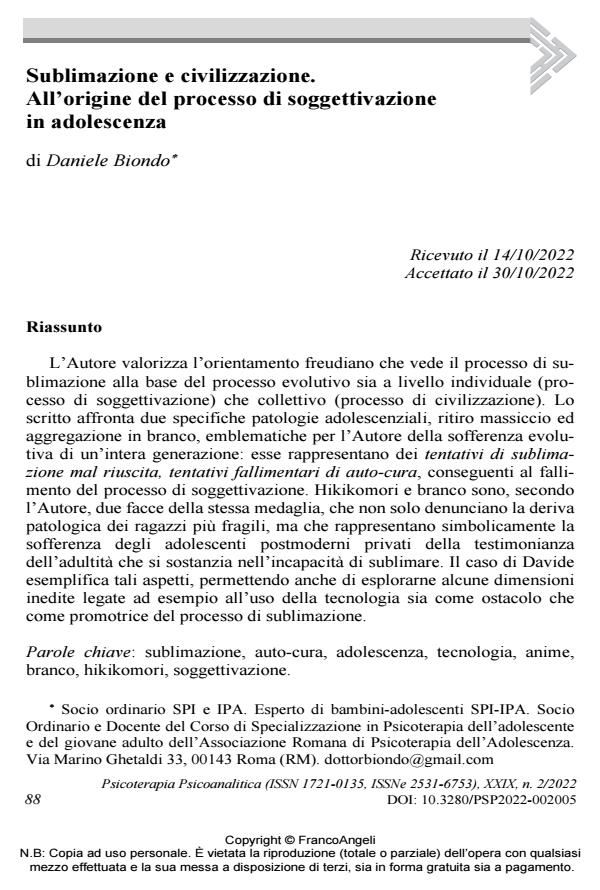Sublimation and civilization. At the origin of the process of subjectivation in adolescence
Journal title PSICOTERAPIA PSICOANALITICA
Author/s Daniele Biondo
Publishing Year 2022 Issue 2022/2
Language Italian Pages 22 P. 88-109 File size 239 KB
DOI 10.3280/PSP2022-002005
DOI is like a bar code for intellectual property: to have more infomation
click here
Below, you can see the article first page
If you want to buy this article in PDF format, you can do it, following the instructions to buy download credits

FrancoAngeli is member of Publishers International Linking Association, Inc (PILA), a not-for-profit association which run the CrossRef service enabling links to and from online scholarly content.
The Author values the Freudian orientation which sees the process of sublimation at the basis of the growth process both at the individual level (process of subjectivation) and at the collective level (process of civilization). The paper deals with two specific adolescent pathologies, massive withdrawal and group aggregation, emblematic for the Author of the evolutionary suffering of an entire generation: they represent unsuccessful attempts at sublimation, unsuccessful attempts at self-care, consequent to the failure of the process. of subjectivation. According to the author, Hikikomori and herd are two sides of the same coin, which not only denounce the pathological drift of the most frag-ile teenagers, but who symbolically represent the suffering of post-modern adolescents deprived of the testimony of adulthood which is substantiated in the inability to sublimate. Davide’s case exemplifies these aspects, also allowing us to explore some new dimensions related, for example, to the use of technology both as an obstacle and as a promoter of the sublimation process.
Keywords: sublimation, self-care, adolescence, technology, anime, herd, hikikomori, subjectivation.
Daniele Biondo, Sublimazione e civilizzazione. All’origine del processo di soggettivazione in adolescenza in "PSICOTERAPIA PSICOANALITICA" 2/2022, pp 88-109, DOI: 10.3280/PSP2022-002005